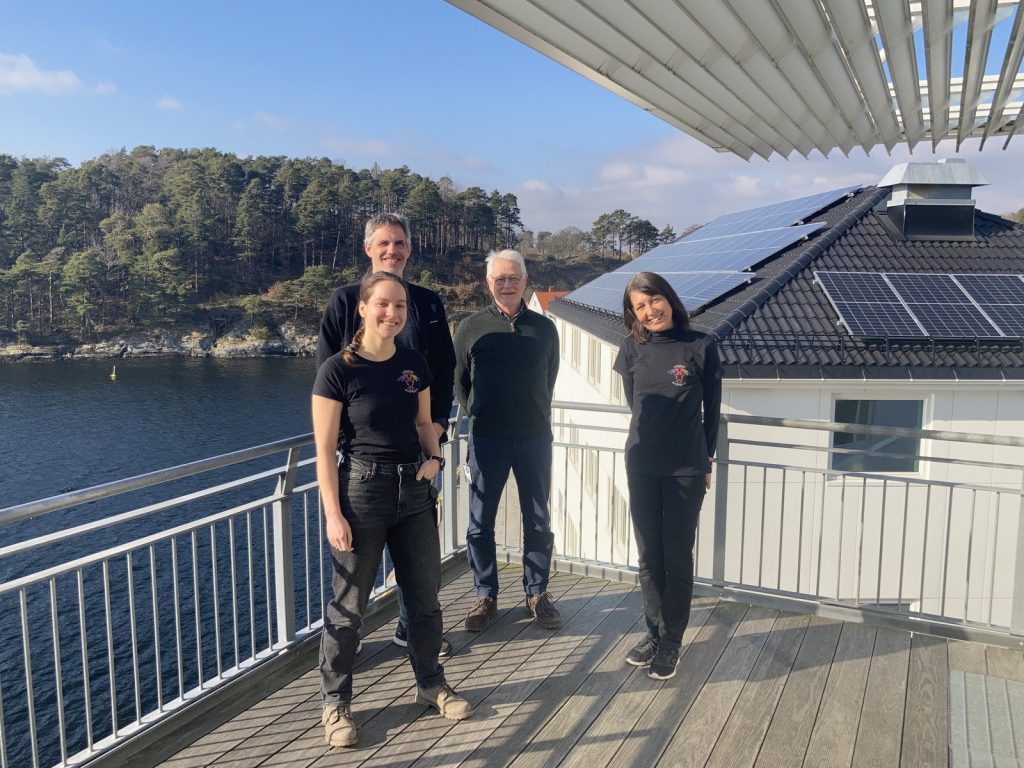From the 7th to the 11th of March the HYPCOP team once more sat together to work on the identification of the species we have in the collection. The strategy was similar as we had in Bergen last year, but this time we looked focus into specific clades. Besides, we met in Flødevigen this time, instead of Bergen, and visited Tone Falkenhaug at her jobsite with the Norwegian Institute of Marine Research (IMR, Havforskningsinstituttet).

The HYPCOP team in Flødevigen, from ltr; Cessa Rauch (UiB), Jon Kongsrud (UiB), Anders Hobæk (NIWA) & project leader Tone Falkenhaug (IMR).
One way for identifying species of hyperbenthic copepods is by looking at their colors. Unfortunately, these get lost as soon as you fixate the samples in technical ethanol. Therefore, we started the workshop with a short sampling trip just out of the bay in front of the research station. We took a small boat from the research station that had a manual operated hinge on the back of the boat, so we could use that for pulling up the grab.
One of the advantages of working with tiny animals is that you sometimes only need small gear to collect them. The grab we used is hand size grab, not much bigger than a 10L basket.
However, as it is made entirely out of metal it is still heavy, which ensures it will be able to “grab” the mud from the bottom when it hits the sea floor.
Once we arrived at a nice location with the boat, we placed the grab over the edge of the boat and let it sink to the bottom which was about 40m deep.
Once the grab would touchdown it would close and engulf softbottom material including the animals that are associated with it. The closed grab would be town back with the manual hinge from the boat. Once onboard, we would empty the grabs content in a bucket and sieve some of the material. This material would go back to the lab for examination.
We carefully examined the sediment, and it was not yet very rich with benthos. We caught a few interesting copepods species, that we documented and fixated for identification.
March is not the best season for benthic copepod sampling, the water is still very cold from the winter and most of the small algae needs to grow back. Benthic copepods are much more abundant with rising temperatures and lots of algae growth. Back in the laboratory we started working on our museum collection copepods and assigned clades in our family tree that we would examine first.
Bigger clades had more priority, and so we took those samples and checked the individual specimens. All the specimens we had in our collection are exoskeleton remnants from the DNA extraction (hence we could have a phylogenetic tree). The exoskeletons are still good for morphology identification but hard to see (due to there translucent nature). Therefore, to help with the identification we would often stain the exoskeletons either with lactophyl blue or lignin pink, which resulted in a visually pleasing collection of prepared slides of different colors.
Thanks to the workshop we now have manage to identify 145 out the 580 specimens; our efforts for identifying will continue and a new workshop is already planned, we meet again in June and in September, with also this time, help of international researchers!
Stay tuned with @planetcopepod!
-Cessa





